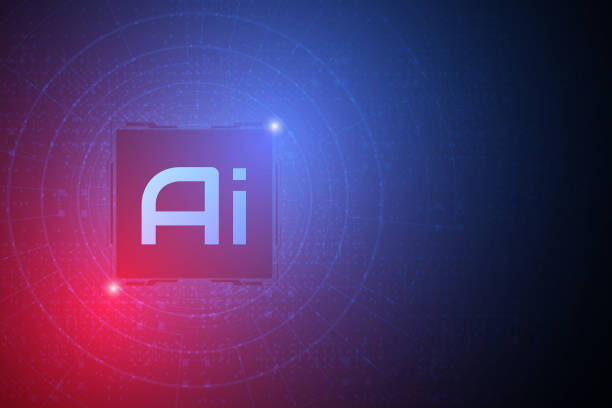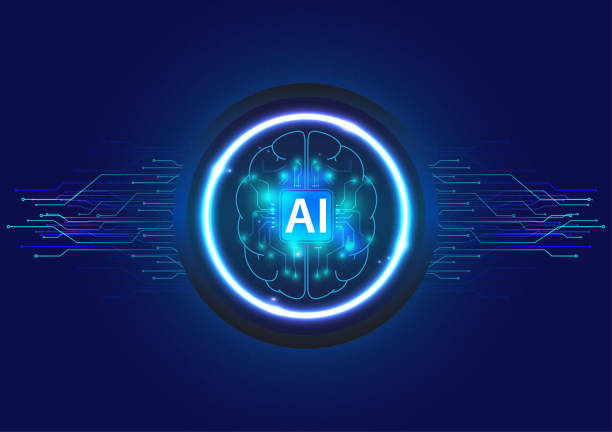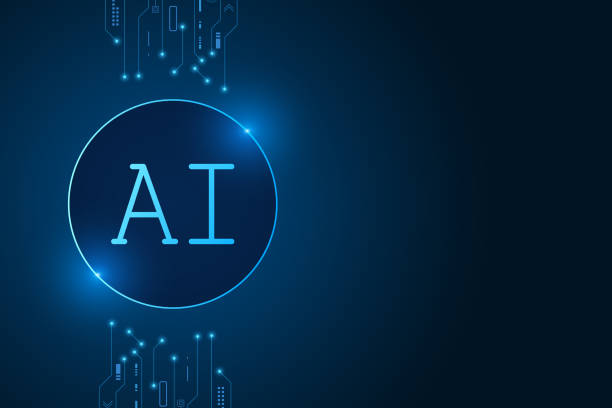What is an AI Robot and How Does it Work?
An AI robot, sometimes also known as an #IntelligentAgent, is a computer program designed to perform tasks that typically require human intelligence.
These tasks can include learning, problem-solving, decision-making, natural language understanding, and pattern recognition.
AI robots use various algorithms and models such as machine learning, deep neural networks, and natural language processing (NLP) to simulate human cognitive processes.
The general operation of an AI robot involves receiving input (data), processing it, and generating output (a decision or action).
This process can be improved through continuous interaction with the environment and learning from experiences.
For example, an AI robot can be used to answer customer questions on a website, detect fraud in financial transactions, or navigate a self-driving car.
The use of AI robots is rapidly expanding across various industries and is expected to play a significant role in the future.
AI robots have the ability to automate complex processes and can help improve efficiency, reduce costs, and increase accuracy.
One of the important aspects of an AI robot’s performance is its ability to learn and adapt to new conditions.
This capability allows the robot to improve its performance over time and offer better solutions when facing new challenges.
Furthermore, AI robots can achieve better decision-making by collaborating with humans and assist them in performing complex tasks.
How much does losing business leads due to an unprofessional website cost you? Solve this problem forever with professional corporate website design by Rasavab!
✅ Increase credibility and trust among potential customers
✅ Easier attraction of new business leads
⚡ Get a free consultation now!
Types of AI Robots Based on Application
AI robots are divided into different categories based on their diverse applications.
One of the most common classifications is based on the type of task the robot performs.
For example, chatbots are designed to interact with users and answer their questions, while image recognition bots are used for analyzing images and identifying patterns within them.
Chatbots are typically used in customer services, marketing, and technical support, and can automatically answer frequently asked questions and guide users.
Click here to preview your posts with PRO themes ››
Another type of AI robot is recommendation bots, which are designed to suggest products, services, or content to users.
These robots, by analyzing data related to user interests and behaviors, can provide personalized suggestions that are likely to be appealing to them.
AI robots also have numerous applications in the medical field, including disease diagnosis, treatment planning, and surgical assistance.
Furthermore, AI robots play an important role in the manufacturing and automation industries.
Industrial robots can automatically perform repetitive and dangerous tasks, helping to increase productivity and reduce risks.
The use of AI robots in various fields demonstrates that this technology has broad capabilities and can help improve performance and efficiency across different industries.
AI robots are constantly evolving, and with technological advancements, new applications are being discovered for them.
Examining the Advantages and Disadvantages of Using AI Robots
The use of AI robots offers numerous advantages, including increased productivity, reduced costs, and improved accuracy.
AI robots can automate repetitive and time-consuming tasks, allowing humans to focus on more complex and creative tasks.
Furthermore, AI robots can operate 24/7, helping to improve customer services and increase response speed.
Additionally, AI robots can analyze large amounts of data and identify patterns that are not visible to humans, which can lead to better and more accurate decision-making.
However, the use of AI robots also comes with disadvantages.
One of the most significant drawbacks is the high cost of implementing and maintaining AI robots.
Developing and training AI models requires significant expertise and resources, which can be challenging for small and medium-sized enterprises (SMEs).
Moreover, AI robots may perform inadequately when faced with unexpected and complex situations, requiring human supervision and intervention.
There are also concerns about job losses due to automation and the use of AI robots.
Click here to preview your posts with PRO themes ››
Ethical issues are also among the important challenges in using AI robots.
For example, automated decisions by robots may lead to discrimination and inequality, and accountability for mistakes and damages caused by robots is a complex issue.
Therefore, special attention must be paid to ethical considerations in the design and implementation of AI robots, ensuring that this technology is used for the benefit of society and in compliance with human rights and values.
| Advantages | Disadvantages |
|---|---|
| Increased Productivity | High Implementation Cost |
| Reduced Costs | Need for Expertise and Resources |
| Improved Accuracy | Inadequate Performance in Complex Conditions |
The Role of AI Robots in Various Industries
AI robots play multiple key roles across various industries.
In the healthcare industry, AI robots can assist in more accurate disease diagnosis, providing personalized treatments, and improving patient care.
For instance, surgical robots can perform complex operations with greater precision, and nursing robots can help care for patients at home.
AI robots also have extensive applications in the financial industry, including fraud detection, risk management, and providing advisory services to clients.
Machine learning algorithms can identify suspicious patterns in financial transactions and prevent financial crimes.
In the manufacturing industry, AI robots can assist in process automation, improving product quality, and reducing costs.
Industrial robots can perform repetitive and dangerous tasks, helping to increase productivity and reduce risks.
AI robots also play a significant role in the transportation industry, including the development of self-driving cars and traffic management.
Self-driving cars can safely and efficiently navigate roads using sensors and AI algorithms, helping to reduce accidents and improve traffic flow.
In the education industry, AI robots can assist in providing personalized learning, assessing student performance, and offering feedback.
Intelligent educational systems can identify students’ strengths and weaknesses by analyzing data related to their performance and provide educational programs tailored to their needs.
Overall, AI robots contribute to improving efficiency, reducing costs, and increasing quality across various industries, playing a crucial role in their development and advancement.
Does your current website inspire the trust that potential customers should have in your business? If not, it’s time to get a professional and impactful corporate website with Rasavab.
✅ Fully customized design tailored to your brand identity
✅ Increased lead generation and business credibility in the eyes of customers⚡ Contact us now for a free consultation!
Challenges in Implementing and Developing AI Robots
The implementation and development of AI robots come with numerous challenges, including the scarcity of training data, algorithmic complexity, and ethical issues.
To train an AI robot, a large volume of training data is required, and collecting and preparing it can be time-consuming and costly.
Furthermore, AI algorithms are very complex and require high levels of expertise and technical knowledge.
Artificial intelligence can be very beneficial in this regard.
Ethical issues are also among the important challenges in the implementation and development of AI robots.
Automated decisions by robots may lead to discrimination and inequality, and accountability for mistakes and damages caused by robots is a complex issue.
Furthermore, there are concerns about data privacy and security.
AI robots may have access to sensitive data that must be kept secure and confidential.
Another significant challenge is resistance to change and the adoption of new technology.
Some individuals may resist the use of AI robots due to fear of job loss or concerns about robot performance.
Therefore, special attention must be paid to these challenges in the implementation and development of AI robots, and solutions to overcome them should be provided.
These solutions can include educating and informing people, establishing ethical and technical rules and regulations, and developing reliable and transparent algorithms.
With these measures, AI robots can be integrated into society more effectively and safely.
The Future of AI Robots and Their Impact on Society
The future of AI robots is very bright and full of potential.
It is predicted that in the future, AI robots will play a more significant role in our lives and bring about fundamental changes in various fields such as healthcare, education, transportation, and manufacturing.
AI robots can help improve the quality of life, increase productivity, and reduce costs.
For instance, medical robots can assist in more accurate disease diagnosis and personalized treatments, while self-driving cars can help reduce accidents and improve traffic flow.
However, the development of AI robots also presents challenges that must be addressed.
One of the most significant challenges is the concern about job losses due to automation and the use of AI robots.
To address this challenge, appropriate policies for workforce training and retraining must be adopted, and individuals should be prepared for new jobs created by the development of AI robots.
Ethical issues are also among the important challenges in the development of AI robots.
Automated decisions by robots may lead to discrimination and inequality, and accountability for mistakes and damages caused by robots is a complex issue.
Overall, the development of AI robots requires cooperation and coordination among government, industry, and academia.
The government should adopt appropriate policies to support AI robot research and development and formulate laws and regulations for the safe and responsible use of this technology.
Industry should increase investment in AI robot research and development and focus on developing products and services based on this technology.
Universities should educate AI specialists and conduct fundamental and applied research in this field.
Through cooperation and coordination among these three sectors, the full potential of AI robots can be realized, and their challenges mitigated.
How to Train an AI Robot?
Training an AI robot is a complex, multi-stage process that requires knowledge and expertise in various fields such as machine learning, natural language processing, and statistics.
The first step in training an AI robot is collecting training data.
Training data must be relevant to the task the robot is intended to perform and should be sufficiently diverse and comprehensive for the robot to learn various patterns and perform well.
For example, if you want to train an AI robot for image recognition, you need a collection of images that include various types of objects and scenes.
After collecting training data, you need to preprocess it.
Preprocessing involves cleaning the data, removing irrelevant data, and transforming it into a format usable by machine learning algorithms.
For example, if your training data includes text, you need to convert words into numerical representations for machine learning algorithms to process them.
After preprocessing the data, you need to select a machine learning model.
A machine learning model is an algorithm that can learn patterns from training data and use them for prediction or decision-making.
There are various types of machine learning models, each suitable for a specific type of task.
After selecting the machine learning model, you need to train it.
Training a machine learning model involves feeding training data to the model and adjusting its parameters so it can effectively learn patterns.
The training process can be time-consuming and may require continuous iteration and adjustment.
After training the machine learning model, you need to evaluate it.
Evaluation involves testing the model on data that was not used during the training process.
This helps you understand how well your model performs and whether it needs improvement.
If necessary, you can repeat the training process and adjust the model’s parameters to improve its performance.
| Stage | Description |
|---|---|
| Data Collection | Collecting relevant and diverse training data |
| Data Preprocessing | Cleaning and transforming data into a usable format |
| Model Selection | Choosing the appropriate machine learning algorithm |
| Model Training | Feeding data and adjusting parameters |
| Model Evaluation | Testing the model on new data |
Ethical Considerations in Designing and Using AI Robots
Designing and using AI robots involve numerous ethical considerations that must be addressed.
One of the most important considerations is the issue of discrimination.
AI robots may make decisions based on their training data that are discriminatory.
For example, if an AI robot is designed for recruitment and its training data includes information suggesting men are more suitable for a particular job, the robot might automatically select men for that job and overlook women.
Another ethical consideration is the issue of privacy.
AI robots may have access to sensitive data that must be kept secure and confidential.
For instance, if an AI robot is designed to provide healthcare services, it might have access to patients’ medical information.
This information must be kept secure and only made accessible with the patient’s permission.
Furthermore, the issue of accountability is also an important ethical consideration in the design and use of AI robots.
If an AI robot makes a mistake or causes harm, who will be responsible? Is the robot’s designer responsible? Is the robot’s user responsible? Or is the robot itself responsible?
To address these challenges, laws and regulations for the design and use of AI robots must be formulated.
These laws and regulations should address ethical issues such as discrimination, privacy, and accountability, ensuring that AI robots are used for the benefit of society and in compliance with human rights and values.
Furthermore, designers and users of AI robots must be aware of ethical issues and consider them in the design and use of robots.
AI robots can be a powerful tool for improving our lives, but only if used responsibly and with due regard for ethical considerations.
Is your company’s website as professional and trustworthy as it should be? With specialized corporate website design by Rasavab, create an online presence that reflects your credibility and attracts more customers.
✅ Building a powerful and professional image for your brand
✅ Converting visitors into real customers
⚡ Get a free consultation now!
The Impact of AI Robots on the Job Market
The impact of AI robots on the job market is a topic that has garnered significant attention in recent years.
Some believe that AI robots lead to job losses, while others argue that AI robots create new job opportunities.
The reality is that the impact of AI robots on the job market is complex and depends on various factors.
On the one hand, AI robots can automate repetitive and time-consuming tasks, helping to increase productivity.
This can lead to a reduced need for human labor in some industries and make certain jobs obsolete.
For instance, industrial robots can perform repetitive and dangerous tasks in factories, reducing the need for human workers.
On the other hand, AI robots can create new job opportunities.
The development and implementation of AI robots require new specialists with expertise in fields such as machine learning, natural language processing, and robotics.
Furthermore, AI robots can help create new industries and innovations, which can lead to the creation of new jobs.
For example, the development of self-driving cars requires new specialists in areas such as sensors, software, and artificial intelligence.
To address the challenges arising from the impact of AI robots on the job market, appropriate policies for workforce training and retraining must be adopted.
Individuals need to be prepared for new jobs created by the development of AI robots.
This can include training in new skills, upskilling existing ones, and providing educational opportunities for individuals.
Furthermore, governments and organizations need to support innovation and entrepreneurship to create new industries and new jobs.
AI robots can have positive impacts on the job market, but only if used responsibly and with appropriate policies.
How to Use AI Robots in Your Business?
Using AI robots in business can help improve efficiency, reduce costs, and increase customer satisfaction.
To begin, you first need to identify your business needs and determine in which areas you can benefit from AI robots.
For example, if your business has a high volume of customer inquiries, you can use a chatbot to answer frequently asked questions and provide 24/7 support.
AI in business can bring about transformation.
After identifying your needs, you must choose an AI robot solution that aligns with your requirements.
There are various types of AI robot solutions, each suitable for a specific type of task.
Some solutions are ready-to-use and can be easily implemented in your business, while others require customization and development.
After choosing a solution, you need to implement it.
Implementing an AI robot may involve data training, parameter tuning, and integration with existing systems.
After implementation, you should continuously monitor the robot’s performance and improve it as needed.
For successful use of AI robots in business, it is essential to have a clear strategy and continuously evaluate the robot’s performance.
Furthermore, it is important to be transparent with your customers about the use of AI robots and assure them that their information is kept secure and confidential.
AI robots can be a powerful tool for improving your business, but only if used responsibly and with an appropriate strategy.
Frequently Asked Questions
| Question | Answer |
|---|---|
| What is an AI robot? | It is a robot that uses AI capabilities to understand its environment, reason, learn, and make decisions to perform complex tasks autonomously. |
| What is the main difference between a regular robot and an AI robot? | AI robots can learn and adapt to their environment, while regular robots usually operate based on fixed, predetermined programming. |
| In what areas are AI robots used? | In fields such as industry (production lines), medicine (robotic surgeries), services (customer support, smart vacuum cleaners), exploration (space and underwater), and entertainment. |
| How do AI robots learn? | They acquire new skills by analyzing large datasets and identifying patterns through machine learning algorithms and deep learning. |
| Can AI robots have emotions? | Currently, no. They can identify or simulate emotions, but they do not experience real emotions like humans. |
| What are the most important advantages of using AI robots? | Increased productivity, reduced human error, performance of dangerous or repetitive tasks, and provision of innovative and efficient services. |
| What challenges exist in the development of AI robots? | Need for abundant and high-quality data, algorithmic complexity, ethical issues, cybersecurity, and high research and development costs. |
| Are AI robots dangerous to humans? | With adherence to safe design principles and ethical regulations, no. Concerns are more related to social and economic impacts such as changes in the job market. |
| What is an example of an AI robot in daily life? | Smart vacuum cleaner robots (like Roomba) that automatically map and clean the house, or intelligent voice assistants (like Siri and Alexa). |
| How is the future of AI robots predicted? | They are expected to become smarter, more autonomous, and capable of more complex interactions with humans, playing a more prominent role in industry, medicine, transportation, and daily life. |
And other advertising services from Rasa Web Advertising Agency:
Smart Data Analysis: Designed for businesses seeking campaign management through Google Ads management.
Smart Digital Branding: Designed for businesses seeking digital branding through intelligent data analysis.
Smart Marketing Automation: Revolutionize website traffic increase with the help of real data.
Smart Reportage: A professional solution for customer acquisition with a focus on precise audience targeting.
Smart Data Analysis: Designed for businesses seeking customer behavior analysis through Google Ads management.
And over hundreds of other services in the field of internet advertising, advertising consulting, and organizational solutions.
Internet Advertising | Advertising Strategy | Advertorial
Resources
What is Artificial Intelligence?
What is AI and How Does it Work?
AI Robots; From Myth to Reality
What is Artificial Intelligence? Everything you need to know
? To elevate your business in the digital world, Rasavab Afarin Digital Marketing Agency, specializing in SEO, online advertising, and user-friendly website design, is with you to ensure a powerful and lasting presence.
📍 Tehran, Mirdamad Street, next to Bank Markazi, Kazerun Jonubi Alley, Ramin Alley, No. 6













